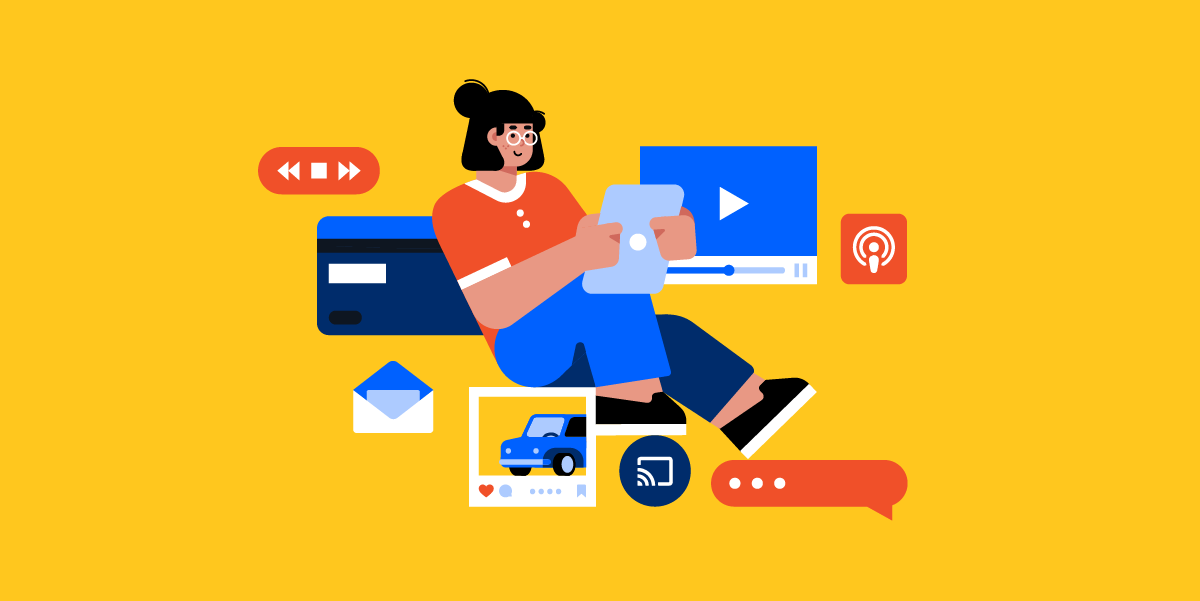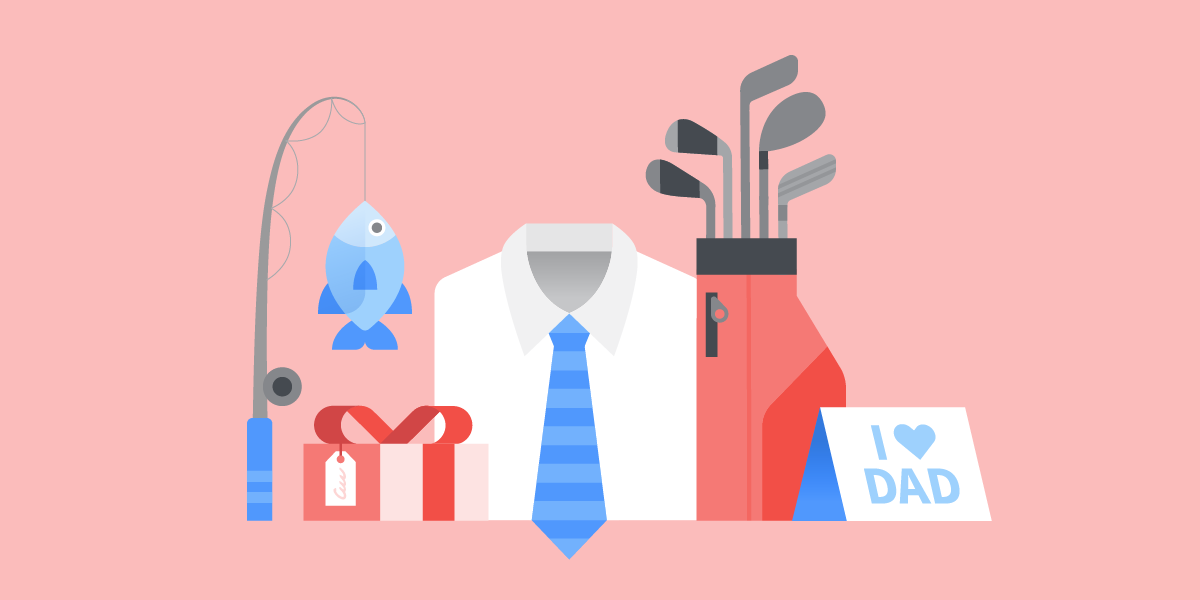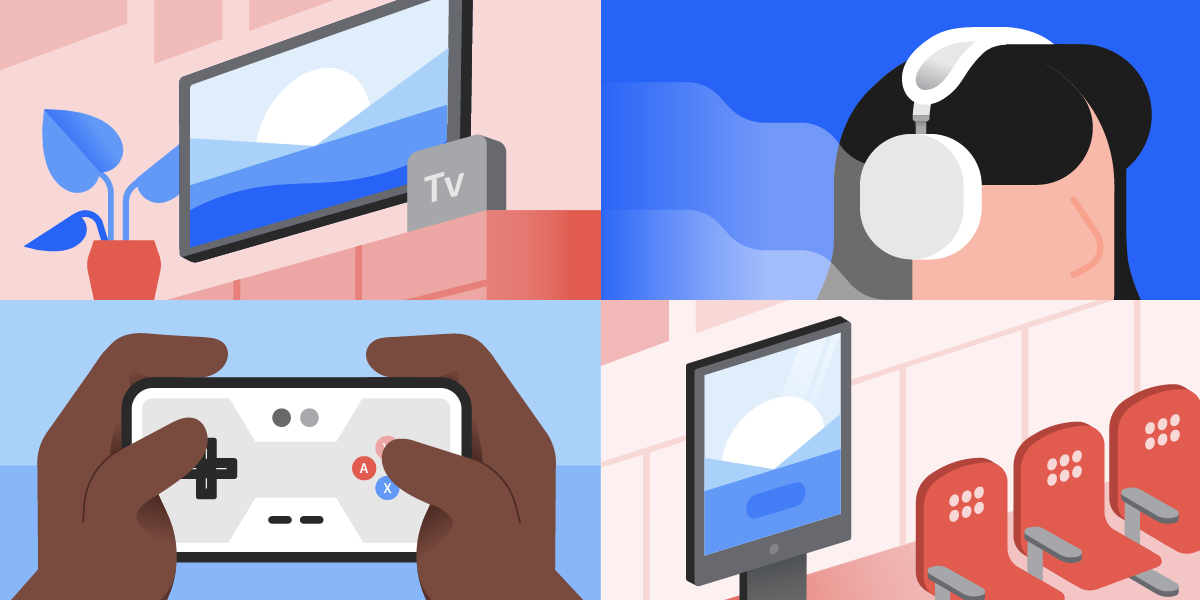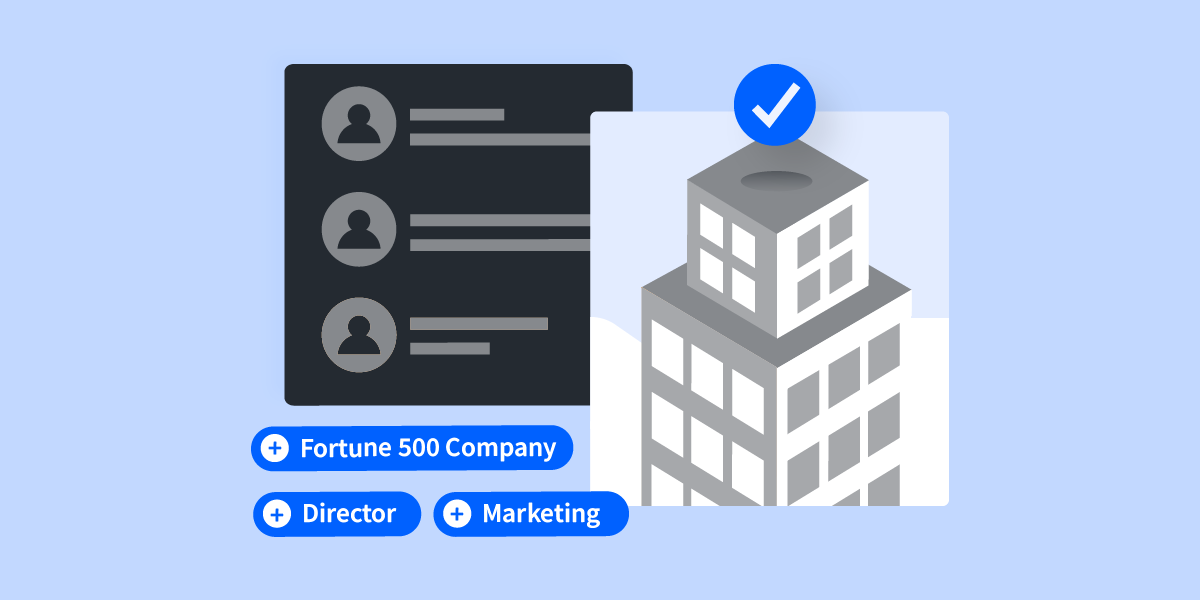It’s become increasingly competitive in our fragmented media landscape to attract customer attention. This is in part because advertising now stretches across dozens of mediums: apps, laptops, tablets, podcasts, television, radio, social media, and more. With so many touch points, there is more competition for the attention of your desired audience.
Consumers use various devices and channels daily, often flipping between them or multi-tasking. A person might browse online while listening to a podcast, or they’ll listen to a Spotify playlist while working on their laptop. Because users encounter so much media throughout the course of a day, they can become bored or disinterested by it quickly. In short: today’s consumers get distracted easily.
For marketers, this can make it challenging to reach the right customers at the right time, in the right place, and when they’re in the right frame of mind. To help you make sure your campaign captures the awareness of the audience you want, we’re sharing 5 tips for attracting consumer attention.
Attract Customer Attention From the First Moment
People encounter countless amounts of media throughout the course of a day, and often, they are multi-tasking while they encounter it. For example, a person might start their day listening to a music playlist, while eating breakfast, and skimming emails in their inbox. This multi-tasking and multi-media norm means that your window for grabbing a person’s attention is short. If you don’t capture it within the first few seconds, they will move on.
To avoid distraction, plan a strategy for your ads before implementing them. Start by thinking about what your customers like and want. That way, you can plan creative and messaging that resonates with them. In many cases humour and entertainment will capture attention, or, an ad that creates a positive emotional feeling. An ad that is funny, entertaining, or emotional, is more likely to grab the attention of a viewer or listener.
Another tip; ensure that your ad is engaging from the start. If you don’t capture the attention of your audience immediately, then you risk them moving on. To avoid this, hook your target demographic in the first few seconds by using language or imagery that speaks to them, intrigues them, or spurs an emotional response.
Regularly Update Your Customer Profiles
Customer profiles provide factual information about the demographics and buying behaviours of your target audience. The profile describes everything you need to know about a specified group of customers. A profile might include details about the age, location, life stage, income level, education, and preferences of an audience. With this information, you can create a profile that leverages demographic information to create a digital strategy that aligns with the wants and needs of your audience.
It’s important to note that creating a customer profile isn’t a one and done project. We are always evolving, shaped by world events, culture, technology and more. This means that consumers and their habits are evolving, too. As a result, your customer profiles can’t be stagnant. Your customers are embracing new technologies as they become available, which means the channels they are likely to respond to digital ads on is changing too. Therefore, it’s important to keep your profiles updated.
On a regular basis, reevaluate and update the profiles so that they reflect current norms. By doing this, you can optimize your campaigns to capture your audience’s attention best—because updated customer profiles will mean your ads are relevant and on trend.
Leverage Channels That Command Attention
Selecting channels that best align with your target audience will help to capture their attention. Another strategy? Build your campaign around the channels that are particularly well-geared toward holding the attention of consumers. Two channels to consider are programmatic audio and connected TV (CTV).
Programmatic audio ads do not rely on visual engagement. Because of this, digital audio reaches consumers in an immersive way that visual advertising cannot. Music spurs emotions, and listening to a podcast can emulate the experience of chatting with a friend.
Digital audio also commands the listener’s full attention in a way that other digital formats do not. This leads to listeners feeling intimately connected to the content they are hearing, which sets the stage for a better connection between a listener and a brand. The listener is more receptive to the ads, which creates the opportunity to drive engagement. The personal nature of audio also results in ads having a lasting and memorable effect, which means a higher rate of ad recall.
Connected TV ads also hold audience attention particularly well. CTV’s natural full-screen experience lends itself to highly viewable ads, in an environment in which the audience is already captive. When watching content through a connected TV, viewers understand that ads will be part of the experience. Knowing this, they tend to be more receptive to them. And, ads on CTV aren’t skippable. This combination of factors means that viewers pay more attention to ads seen on CTV, and will generally view the ads from start to finish.
Reach Your Audience in the Right Frame of Mind
Capturing the attention of your audience is often about timing. You want to capture their attention, but you also want to capture that attention when your target demographic is in a receptive frame of mind. One tactic for reaching your audience in that right frame of mind is to leverage contextual targeting. Contextual targeting ensures that your audience views your ad at the right moment, which increases the likelihood of capturing both their attention and engagement.
Contextual advertising targets ads based on the environment in which the ad appears. This targeting strategy uses algorithms to target ad placements based on keywords, website content, and other metadata. This way, ads are shown to users based on the content they are consuming at that moment in time. For example, if a user is reading a blog about types of coffee, they could be served ads for coffee makers, or coffee beans. By doing so, the marketer taps into a moment in which the user is thinking about coffee-related products, and is therefore more open to considering a new product.
Look Beyond Walled Gardens
Since consumer attention today is fragmented, being present across channels is key to capturing that attention. This is why it’s important to look beyond walled gardens when putting together your campaign strategy. When you stay within walled gardens, you limit the possibility of capturing your consumer’s attention on different channels.
There are other limitations to walled gardens, too. One of the challenges of modern digital marketing is an overabundance of tools with limited integration capacities. Even with automation software, closed platforms add complexity by keeping campaign intelligence siloed. Comparing performance between walled gardens and the open market can be incredibly tough, making budget allocation a shot in the dark.
Users today are on a combo of different platforms. While you can’t expect that everyone is on Facebook or LinkedIn, it’s safe to assume that users are visiting pages on the open internet. Therefore, a multi-channel approach that looks beyond walled gardens will be more likely to capture attention that is fragmented.
Want to attract customer attention? Request a demo to learn more about StackAdapt.





